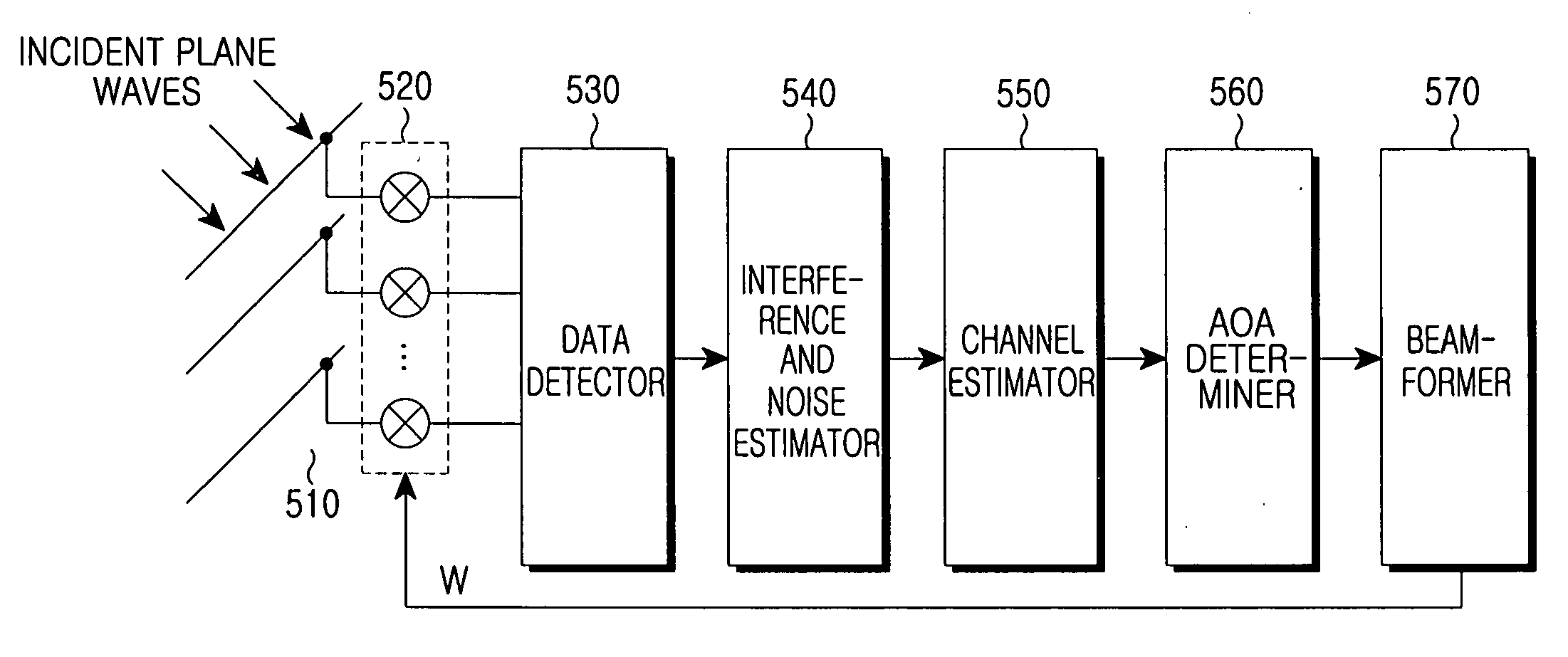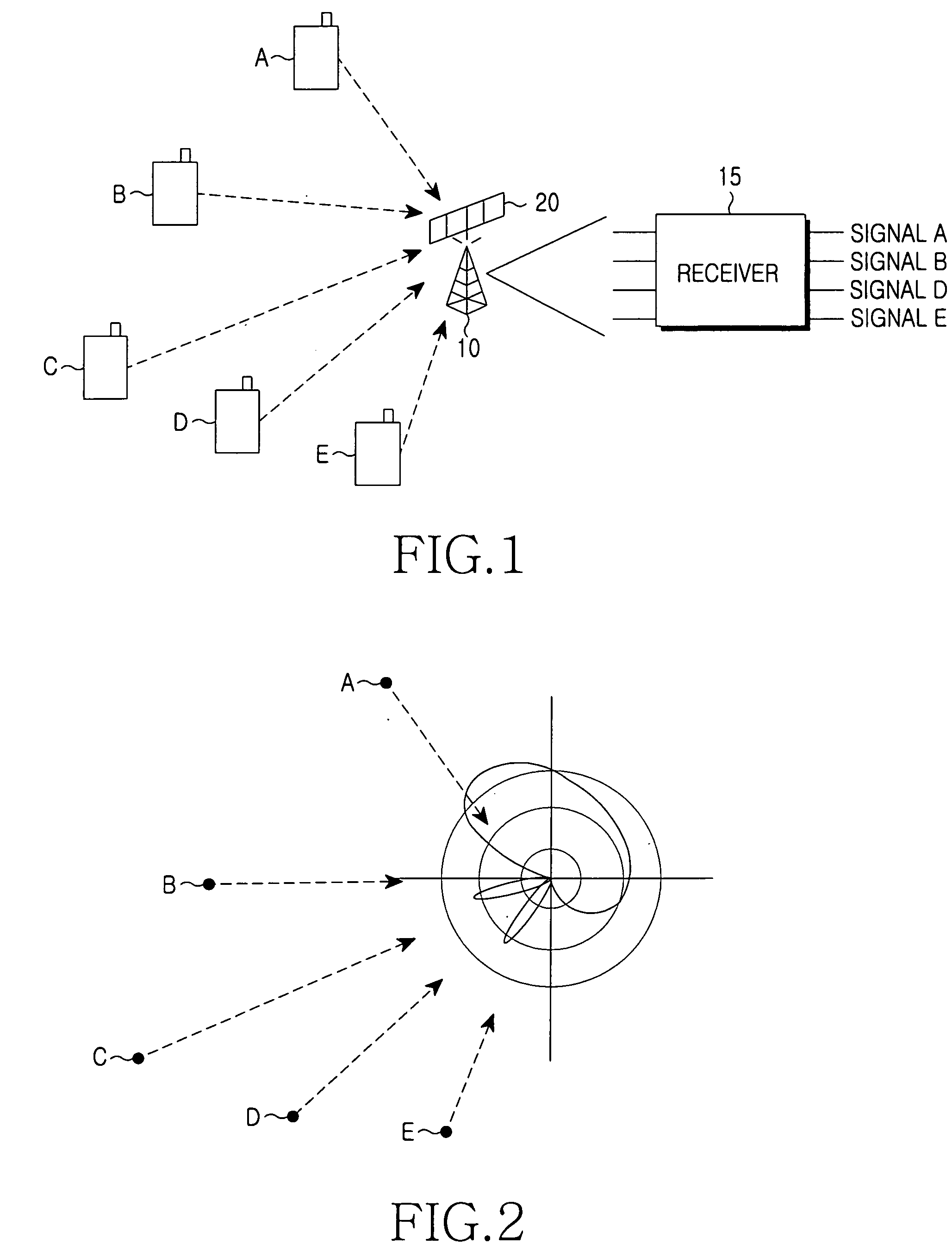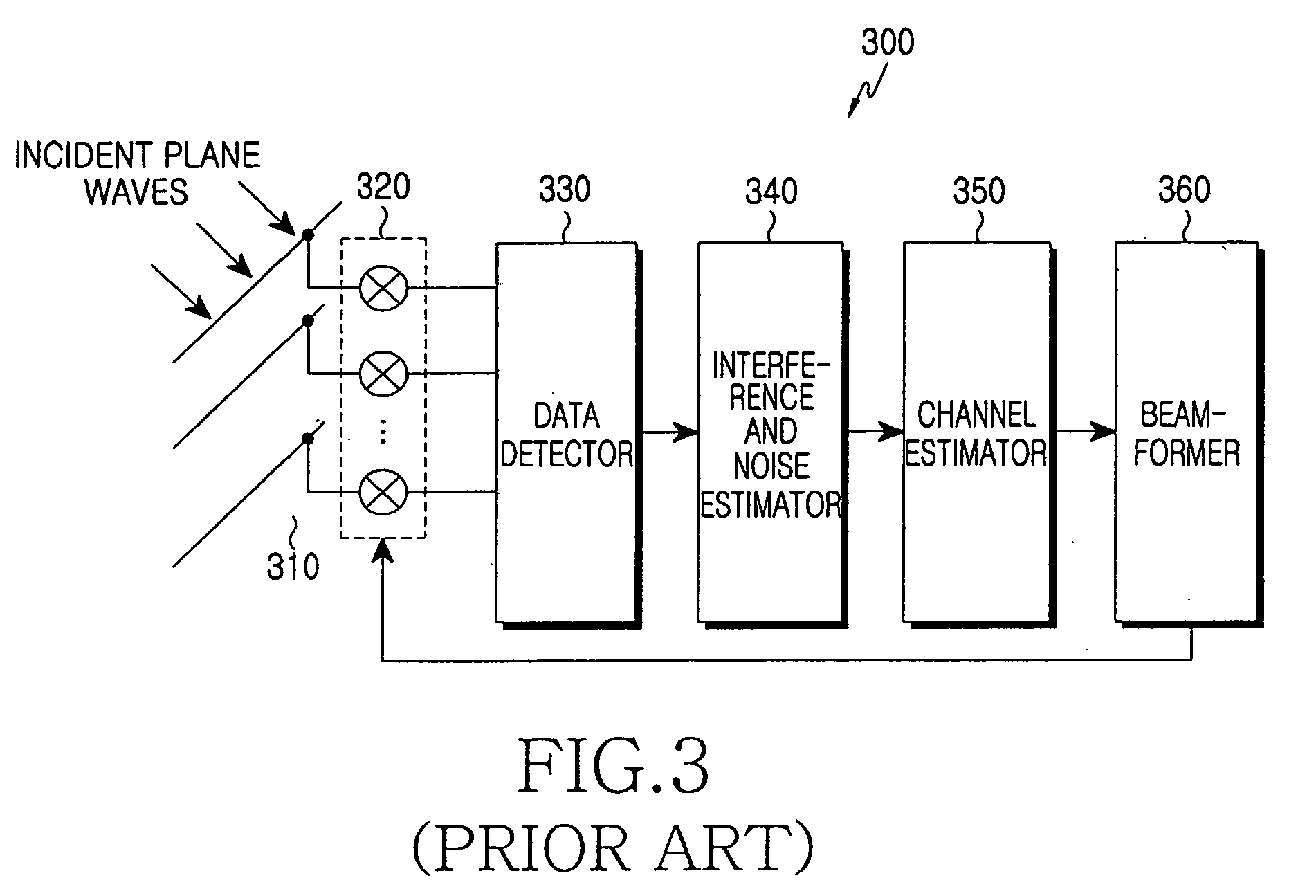Beam-forming apparatus and method using a spatial interpolation based on regular spatial sampling
a technology of spatial interpolation and beam-forming apparatus, applied in antennas, multi-channel direction-finding systems using radio waves, radio wave direction/deviation determination systems, etc., can solve problems such as severe interference, fading dips, and adaptive beam-forming generally only being accomplished, so as to reduce the complexity of channel estimation
- Summary
- Abstract
- Description
- Claims
- Application Information
AI Technical Summary
Benefits of technology
Problems solved by technology
Method used
Image
Examples
first exemplary embodiment
[0046]FIG. 5 is a schematic block diagram illustrating a beam-forming transceiver using a spatial interpolation in accordance with a first exemplary embodiment of the present invention.
[0047] Referring to FIG. 5, a signal received through an array antenna 510, which can comprise incident plane waves received at the antenna elements with different phases, is demodulated to a data signal through a data detector 530. The data signal is input to an interference and noise estimator 540. The interference and noise estimator 540 estimates the interference power and the spectral noise density N0 of the thermal noise power using the data signal provided from the data detector 530. An output of the interference and noise estimator 540 is input to a channel estimator 550. The channel estimator 550 computes channel impulse response information. At this time, channel impulse responses are computed on the basis of antenna elements and users for performing communication through the array antenna ...
second exemplary embodiment
[0097] A second exemplary embodiment as described below determines two angles of arrival closest to the direction in which a user is located, that is, a primary AoA and a secondary AoA, using energy values evaluated at candidate angles of arrival, and computes beam-forming weights (W) at the primary AoA and the secondary AoA.
[0098]FIG. 8 is a schematic block diagram illustrating a beam-forming transceiver using the spatial interpolation and the secondary AoA in accordance with the second exemplary embodiment of the present invention.
[0099] Referring to FIG. 8, a signal received through an array antenna 810, which can comprise incident plane waves received at the antenna elements with different phases, is demodulated to a data signal through a data detector 830. The data signal is input to an interference and noise estimator 840. The interference and noise estimator 840 estimates the interference power and the spectral noise density N0 of the thermal noise power using the provided ...
PUM
 Login to View More
Login to View More Abstract
Description
Claims
Application Information
 Login to View More
Login to View More - R&D
- Intellectual Property
- Life Sciences
- Materials
- Tech Scout
- Unparalleled Data Quality
- Higher Quality Content
- 60% Fewer Hallucinations
Browse by: Latest US Patents, China's latest patents, Technical Efficacy Thesaurus, Application Domain, Technology Topic, Popular Technical Reports.
© 2025 PatSnap. All rights reserved.Legal|Privacy policy|Modern Slavery Act Transparency Statement|Sitemap|About US| Contact US: help@patsnap.com



